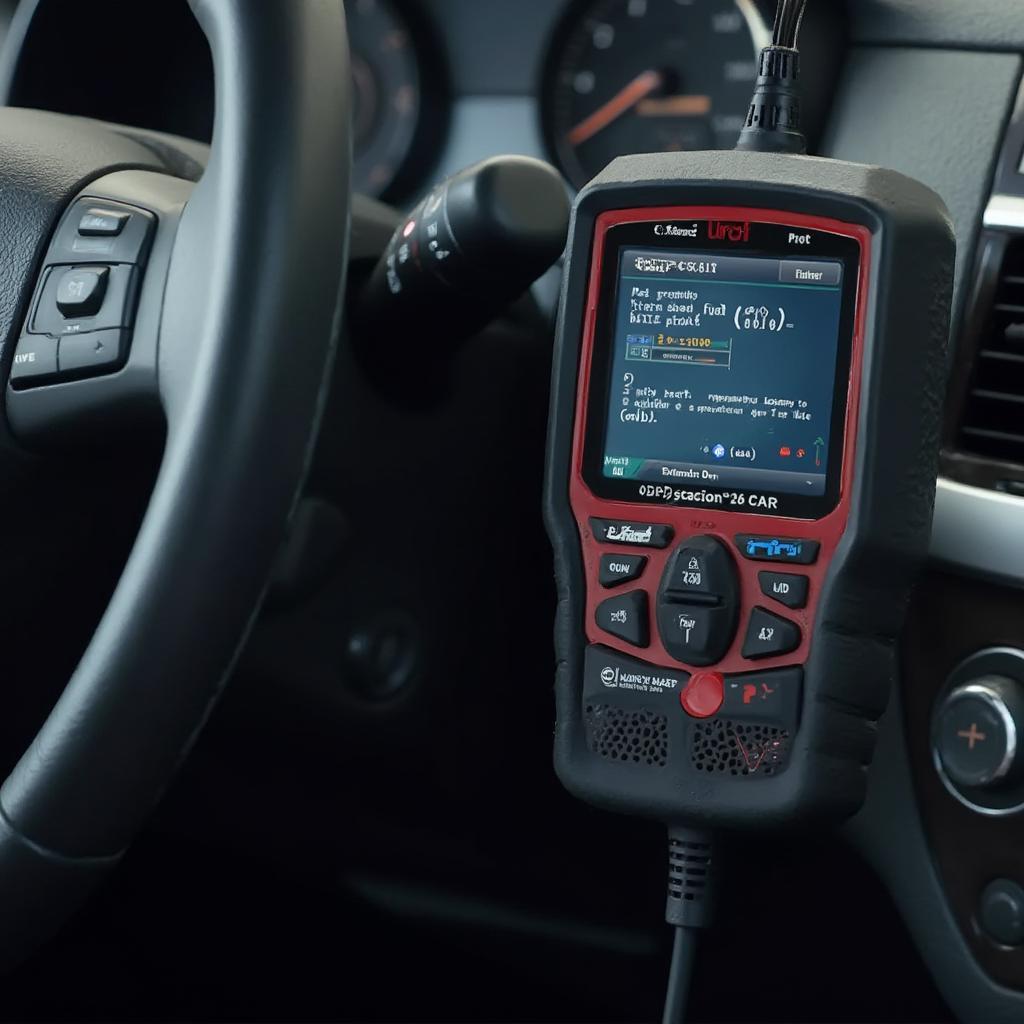OBD2 code fuel encompasses a range of diagnostic trouble codes (DTCs) related to your vehicle’s fuel system. These codes are crucial for identifying and resolving fuel-related issues, ensuring optimal engine performance and fuel efficiency. This guide will delve into the complexities of OBD2 fuel codes, providing you with the knowledge to understand, diagnose, and address these common automotive problems.
Decoding the Mystery of OBD2 Code Fuel
OBD2, or On-Board Diagnostics II, is a standardized system that allows you to access diagnostic information about your vehicle. When a problem arises within the fuel system, the OBD2 system generates a specific code that pinpoints the area of concern. Understanding these “obd2 code fuel” designations is the first step towards a solution. These codes can range from issues with the fuel injectors, fuel pump, oxygen sensors, and even the evaporative emissions system.
Common OBD2 Code Fuel Designations and Their Meanings
There are numerous OBD2 codes related to fuel, each with a specific meaning. Some of the most frequently encountered codes include:
- P0171 and P0174: These codes indicate a lean fuel mixture, meaning there is too much air and not enough fuel.
- P0172 and P0175: These codes signal a rich fuel mixture, the opposite of a lean condition, indicating too much fuel and not enough air.
- P0201 – P0208: These codes relate to malfunctions in the fuel injectors, essential components for delivering fuel to the engine.
- P0440 – P0457: These codes often indicate problems within the Evaporative Emission Control (EVAP) system, designed to prevent fuel vapors from escaping into the atmosphere.
What Causes OBD2 Code Fuel?
A variety of factors can trigger “obd2 code fuel” errors. These include:
- Faulty Oxygen Sensors: These sensors monitor the air/fuel mixture and provide crucial data to the engine control module (ECM). Malfunctioning sensors can lead to inaccurate readings and incorrect fuel adjustments.
- Failing Fuel Pump: A weak or failing fuel pump can struggle to deliver adequate fuel pressure, resulting in a lean fuel mixture.
- Clogged Fuel Injectors: Dirt and debris can clog fuel injectors, disrupting the proper fuel spray pattern and causing performance issues.
- Vacuum Leaks: Leaks in the intake manifold or vacuum hoses can introduce unmetered air into the engine, leading to a lean condition.
- EVAP System Issues: A faulty gas cap, a damaged charcoal canister, or leaks in the EVAP system can trigger specific fuel-related codes.
Diagnosing and Fixing OBD2 Code Fuel Issues
Addressing “obd2 code fuel” problems requires a systematic approach. Here’s a step-by-step guide:
- Retrieve the Code: Use an OBD2 scanner to retrieve the specific code.
- Research the Code: Understand the meaning of the code using reliable resources.
- Inspect Related Components: Visually inspect components related to the code, such as fuel injectors, vacuum hoses, and the fuel pump.
- Test Components: Use a multimeter or other diagnostic tools to test the functionality of suspected components.
- Repair or Replace: Repair or replace any faulty components.
- Clear the Code: After repairs, clear the code using the OBD2 scanner.
- Verify the Fix: Monitor your vehicle to ensure the problem is resolved and the code does not reappear.
“Accurately diagnosing OBD2 fuel codes requires a good understanding of the fuel system and the use of proper diagnostic tools. Don’t hesitate to consult a qualified mechanic if you’re unsure.” – John Davis, ASE Certified Master Technician
What to Do if the OBD2 Code Fuel Returns?
If the “obd2 code fuel” returns after repairs, it may indicate a more complex underlying issue. In such cases, consulting a qualified mechanic is highly recommended. They have the expertise and specialized equipment to perform more in-depth diagnostics and pinpoint the root cause of the problem.
Conclusion
Understanding and addressing “obd2 code fuel” is essential for maintaining your vehicle’s performance and efficiency. By utilizing the information in this guide, you can take the first steps towards resolving fuel-related issues. Remember, a reliable OBD2 scanner is your first line of defense in diagnosing and fixing these problems.
FAQ
- What does OBD2 stand for? On-Board Diagnostics II
- How do I read OBD2 codes? With an OBD2 scanner.
- What is a lean fuel mixture? Too much air, not enough fuel.
- What is a rich fuel mixture? Too much fuel, not enough air.
- What should I do if I can’t fix the problem myself? Consult a qualified mechanic.
- What are some common causes of “obd2 code fuel”? Faulty sensors, failing fuel pump, clogged injectors.
- Why is it important to address “obd2 code fuel” promptly? To maintain engine performance and fuel economy.
Need Help? Contact us via WhatsApp: +1(641)206-8880, Email: [email protected] or visit us at 789 Elm Street, San Francisco, CA 94102, USA. We have a 24/7 customer support team ready to assist you.


